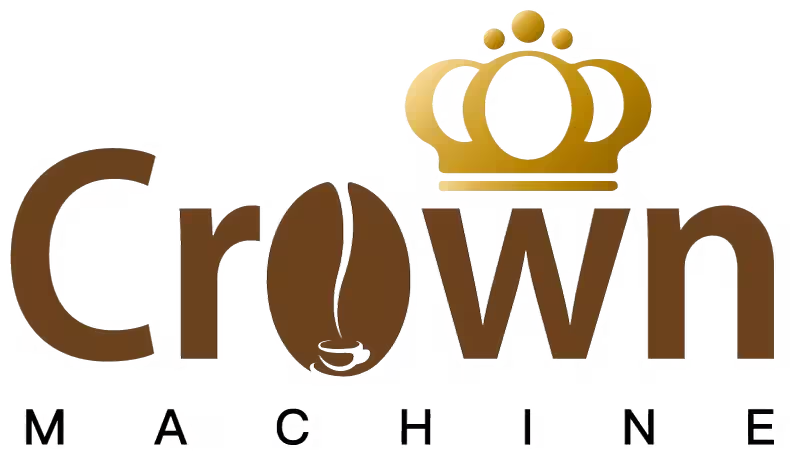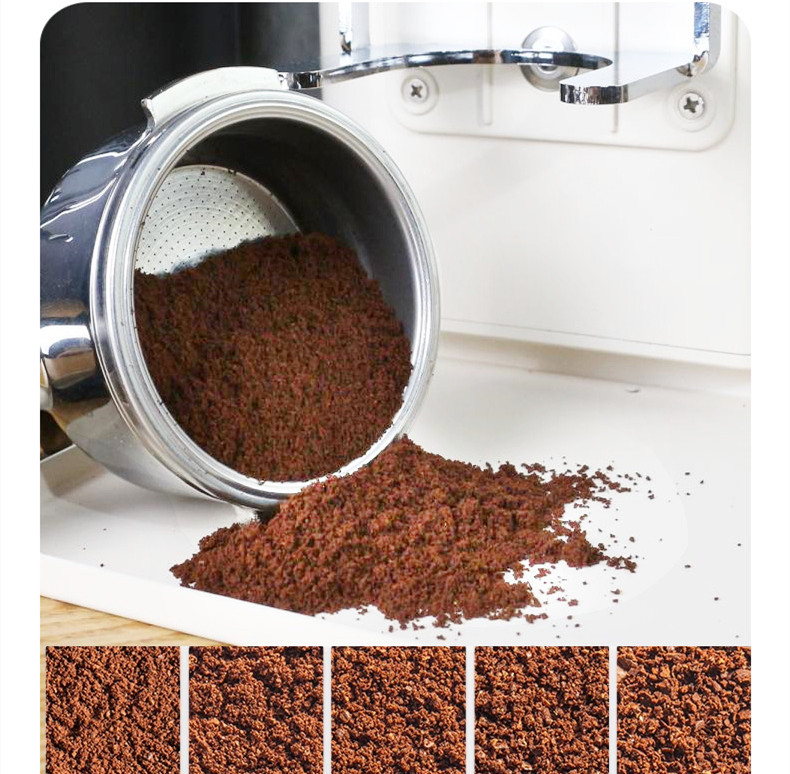In coffee tasting events, the grinder is a core tool that influences flavor expression, process standardization, and the experience of participants. Its significance is reflected in four dimensions: flavor presentation, operational consistency, scientific verification and educational value. The following elaborates on specific scenarios, data comparisons, and case analyses:
First, flavor presentation: Grinding is the “first filter” of coffee flavor.
The performance of the grinder directly affects the particle distribution (uniformity of particle size), fine powder rate (speed of flavor release) and thermal effect (flavor retention) of coffee grounds, which in turn determines the balance of acidity, sweetness and bitterness and the aroma layers of coffee.
The uniformity of particle size determines the clarity of flavor
Case comparison:
High-end grinding machine: It adopts a 55mm conical cutter head, with a standard deviation of particle size ≤0.1mm. After boiling, the sour taste is bright and the sweet taste is prominent.
Entry-level grinding machine: 40mm cutter head, particle size standard deviation 0.3mm, slightly bitter and indistinct flavor after brewing.
Data support: For every 0.1mm increase in particle size uniformity, flavor clarity can be enhanced by 15%-20% (SCA laboratory data).
2. The fine powder rate affects the extraction efficiency
Flavor influence:
Excessive fine powder (>15%) : Over-extraction, with prominent bitterness and astringency, masking the floral aroma and fruit acidity.
Moderate fine powder (8%-12%) : Balanced sourness and sweetness, rich aroma layers.
Tool comparison
Single-dose grinders (such as Niche Zero) : Fine powder rate <8%, suitable for light-baked bean tasting.
Traditional bean silo grinding machine: Fine powder rate 12%-18%, needs to be used in conjunction with a powder sieving device.
3. Thermal effect and flavor retention
Comparison of motor heating:
Professional model: It takes 8 seconds to grind 18g of beans. The motor temperature is ≤45℃, retaining the floral aroma and citrus acidity.
Entry-level model: It takes 45 seconds to grind 18g of beans, and the motor temperature is ≥60℃, resulting in flavor loss (a 20%-30% reduction in floral aroma).
Solution: In the tasting event, give priority to using electric equipment for low-temperature grinding or manual grinding machines for batch and small-scale operations.
Second, operational consistency: the cornerstone of standardized processes
In multi-person tasting activities, the stability of the grinding machine directly affects the reliability of the experimental results. If the grinding degree, fine powder rate and powder output fluctuate too much, it will lead to significant differences in the tasting results of the same coffee bean.
1. Standardization of grinding degree
Case: The same coffee bean is ground respectively with #5 (fine powder) and #10 (medium-fine powder) :
#5 Grinding degree: Extraction time 22 seconds, TDS 14%, prominent bitterness, rough texture.
#10 Grinding degree: Extraction time 28 seconds, TDS 12%, balanced sweet and sour taste, smooth texture.
Conclusion: During the tasting activities, the grinding degree should be fixed (such as uniformly using #8), and calibration tools (such as powder sieving instruments) should be used for verification.
2. Precision of powder output
Tool comparison
Combination of electronic scale and grinding machine: The error of powder output is ≤±0.5g, suitable for scientific tasting.
Traditional visual grinding: The error of powder output is ±2g, resulting in a fluctuation of ±5% in extraction rate and poor flavor consistency.
Operation suggestion: During the tasting activity, each person should be allocated 15g±0.3g of coffee powder to ensure consistent brewing parameters.
3. Control of residual powder rate
Data comparison
Single-dose grinder: Residual powder rate <0.5g, avoiding cross-contamination of flavors.
Traditional bean mill: The residual powder rate is 2-3g. It needs to be thoroughly cleaned when tasting different types of beans.
Application scenario: When tasting light-roasted and dark-roasted beans, a single-dose grinder should be preferred.
Third, scientific verification: Data-driven tasting analysis
In coffee tasting events, grinders need to be used in conjunction with professional tools (such as powder sieves, electronic scales, and refractometers) to quantify flavor differences and verify hypotheses.
Particle size distribution analysis
Tools: Laser particle size analyzer or 20-mesh screen.
Case:
Soybean seed A: After grinding, the proportion of medium powder is 70%, and that of fine powder is 10%. After boiling, the acidity is prominent.
Bean seed B: After grinding, the proportion of medium powder is 50% and that of fine powder is 20%. When brewed, it has a distinct bitter taste.
Conclusion: The flavor trend can be predicted through the particle size distribution, guiding the adjustment of grinding parameters.
2. Extraction efficiency monitoring
Tool: A refractometer is used to measure TDS (Soluble Solid concentration).
Case:
Grinding degree #8: TDS 12.5%, extraction rate 19%, balanced flavor.
Grinding degree #5: TDS 14%, extraction rate 23%, over-extraction.
Application: During the tasting event, TDS data needs to be recorded and the flavor model verified in combination with sensory scoring.
3. Thermal effect experiment
Tool: Infrared thermometer for monitoring motor temperature.
Case:
Motor temperature ≤45℃ : Flower fragrance retention rate 90%.
Motor temperature ≥60℃ : Flower fragrance retention rate 60%.
Conclusion: Low-temperature grinding can reduce flavor loss and improve the accuracy of tasting.
Fourth, educational value: A bridge from tool to theory
In coffee teaching or tasting activities, the grinder serves as an intuitive teaching aid for trainees to understand the relationship between grinding degree and flavor.
Sensory training tools
Operation: Trainees are divided into groups to grind the same bean with different grinding degrees (#5/#8/#10), brew it, and then conduct blind tests and describe the flavor differences.
Objective: To understand the principle that “fine powder adds bitterness and coarse powder adds sourness”.
2. Fault Simulation and Resolution
Scene: Manually set faults such as “stuck beans” and “excessively high fine powder rate”, trainees need to diagnose and solve them.
Objective: Master the maintenance skills of the grinding machine, such as cleaning the cutter head and adjusting the grinding degree.
3. Scientific Experiment design
Case: Compare the effects of “single-dose grinding” and “traditional bean jar grinding” on flavor consistency.
Data: The cup evaluation score fluctuation for single-dose grinding is ≤1 point, and the fluctuation for traditional bean chamber grinding is ≥3 points.
Conclusion: Single-dose grinders are more suitable for teaching and tasting activities.
Fifth, Summary and Pitfall Avoidance Guide
Core conclusion:
The grinding machine is the core tool for flavor expression in tasting activities. It is necessary to give priority to choosing models with uniform particle size, low-temperature grinding and single-dose design.
Standardized operations (such as fixed grinding degree, powder output, and cleaning process) can enhance the reliability of tasting results.
Guide to Avoiding Pitfalls:
Do not use the “Coffee Shop Commercial Grinder” to participate in the tasting event (with a high residual powder rate and a high risk of cross-contamination of flavors).
Avoid the operation of “motor overheating caused by continuous grinding” (it is recommended to grind in small batches).
Do not confuse the cleaning processes of “manual grinders” and “electric grinders” (manual grinders need to be thoroughly disassembled, while electric grinders need to use cleaning particles).
Through the rational selection of grinders and standardized operations, coffee tasting activities can achieve precise expression of flavor, scientific verification of processes, and maximization of educational value.


